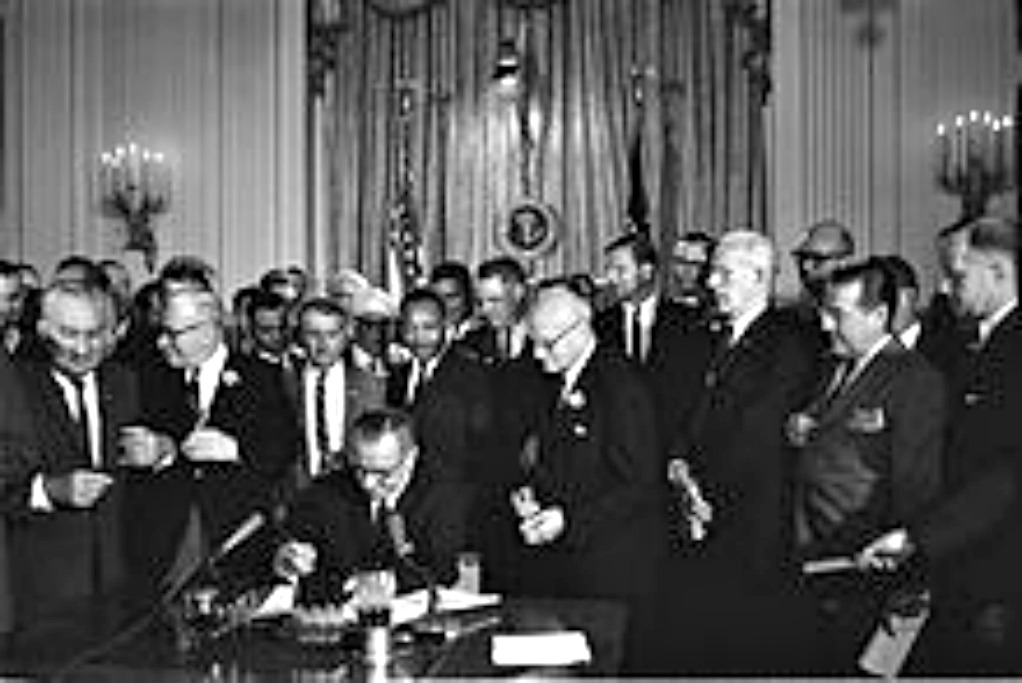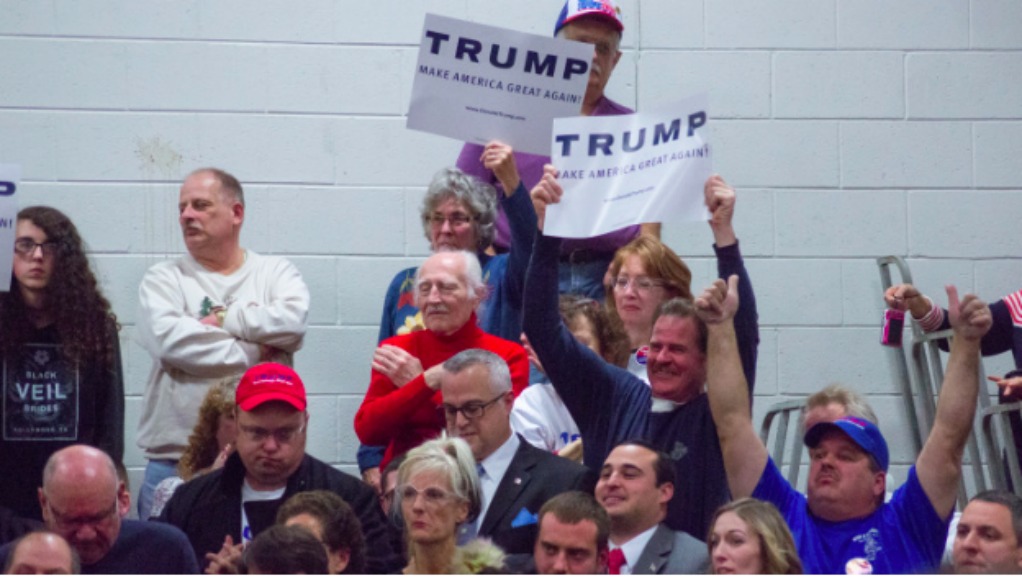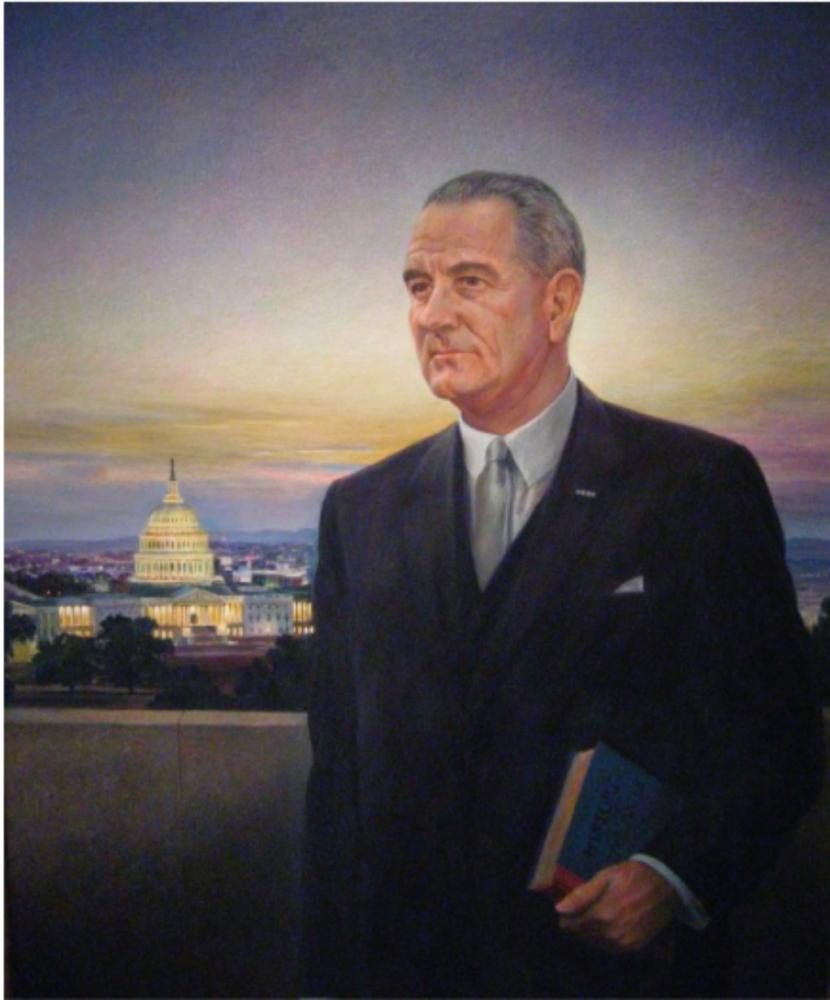2016 Signals Electoral Realignment
April 28, 2017
As the Carcano rifle’s hammer hit the primer, a distinct sound carried through the grassy knoll: three 135-dB staccato notes. Enough to cause hearing damage at close range, and more than enough to shake the confidence of the United States. John F. Kennedy’s death wouldn’t just be fodder for conspiracy theorists, it would shift the tectonic plates of American electoral politics for five decades.
On November 22, 1963, just two hours after the assassination of President John F. Kennedy, Lyndon Baines Johnson was sworn in as president aboard Air Force One, taking office with sky-high approval ratings. Widespread mourning, coupled with Kennedy’s posthumous popularity, gave Johnson the political capital he needed to push past his party’s traditions and achieve civil rights legislation. His commitment became clear in his first address to Congress when he stated, “No memorial oration or eulogy could more eloquently honor President Kennedy’s memory than the earliest possible passage of the Civil Rights Bill for which he fought so long.” His promise materialized in 1964 with the passage of the Civil Rights Act, but not before sparking dissent from the Southern Voting Bloc (remember, it was the Democrats, only 40 years earlier, who had the KKK in attendance at their nominating convention). LBJ, however, wasn’t quick to celebrate his momentous victory. After the final vote, he reportedly lamented to an aide, “[the Democrats] have just lost the South for a generation.”
Johnson’s fears came true in 1968 when American Independent candidate (and racist) George Wallace—“I say segregation now, segregation tomorrow, segregation forever”—carried traditionally Democratic states by wide margins. The only Southern state that Minnesota’s Hubert Humphrey, the Democratic nominee, was able to retain was Texas. Time magazine explained,
The old Democratic coalition was disintegrating, with untold numbers of blue-collar workers responding to Wallace’s blandishments, Negroes threatening to sit out the election, liberals disaffected…the South lost. [T]he party’s machinery, neglected by Lyndon Johnson, creaked in disrepair.
In 1972, Richard M. Nixon’s landslide put the South solidly in the GOP’s column. And since Civil Rights legislation, only favorite sons Jimmy Carter in 1976 (whose victory was likely due to backlash from Watergate) and Bill Clinton in 1992 (barely) have been able to win in Southern states. Of the party’s non-Southern nominees since Humphrey, excluding Hillary Clinton, (McGovern, Mondale, Dukakis, Gore, Kerry, and Obama) only Obama won electoral votes in the South, and only in North Carolina once (‘08), Virginia twice (‘08 and ‘12), and Florida twice (‘08 and ‘12).
Without the South to rely on, and lacking sufficient votes in the Northeast, Democrats have grown increasingly reliant on the mostly-Midwestern “blue wall” states: Minnesota, Wisconsin, Iowa, Ohio, and Pennsylvania. In 2016, Hillary Clinton failed to win all but one of these, allowing Trump to snatch the presidency. However, it’s not that Clinton was simply a weak candidate (Bernie Sanders would have fared worse). Clinton won the popular vote by a decisive margin and made important strides of her own on the electoral map. Where Trump poked clear holes in the blue wall, she poked more subtle ones in the red wall (Clinton saw huge gains in the sunbelt). Collectively, the changes illustrated by 2016’s election seem to signal that America may be on the verge of another Johnson-esque electoral realignment.
Whiter than Ever, Midwesterners No Longer Fit the Democrats’ Mold
67 MILLION Americans call the Midwest home, 52 million are white, and, in all but two states (IL and MN), majorities voted for Trump (Trump was very close in these states). This victory isn’t a Reagan-esque anomaly, rather, it’s years of demographic changes finally taking root on the electoral map. Accordingly, the old Democratic coalition of FDR is beginning to dissolve.
Demographics drive party platforms. Simply put, there’s no policy umbrella under which the white middle class, white farmers, urban youth, and first generation immigrants can all thrive. Effectively, the Democrats can’t please everyone and some voters must be left behind.
For a party that has decisively chosen progressivism, this discrepancy is certain. A platform of minority and civil rights and tax hikes at the top has clear beneficiaries, and it doesn’t garner votes from the Midwest. Midwesterners, therefore, find the GOP’s agenda increasingly appealing.
A few months ago, comedian Colin Jost—an anchor for Saturday Night Live’s Weekend Update segment—poked fun at Tinder’s new gender spectrum feature, saying, “the dating app Tinder announced a new feature this week that gives users 37 different gender identity options. It’s called, ‘Why Democrats Lost the Election.’” In the Midwest, this sentiment undoubtedly rings true.
“It’s the Economy, Stupid”
Midwesterners didn’t just vote against Democrats (many did so by not voting at all), they also voted for Trump. Evangelicals, of which the Midwest is chock full, were turned on by the Republican social platform, while the white middle class, found in Midwestern suburbs, found Trump’s economic promises agreeable. Most notably, however, was the white working class. Since FDR, the group has traditionally voted Democrat, but in 2016 they turned to Trump in wide margins.
Trump is an economic populist, and people voted for his economic promises. Working class manufacturers, specifically in the coal, auto, and steel industries, have seen their jobs dry up throughout the rust belt. A bang-bang punch of automation and outsourcing increasingly drives the demographic into dire economic straits. It’s unlikely he’ll solve their problems (automation isn’t going away), but the group continues to see Trump as their savior. Promises to “bring back jobs” paid off on election day and contributed to Trump’s success in the Midwest.
It’s been said that Hillary Clinton has the women card, that Barack Obama has the African-American card, and that American manufacturers have the Trump card. More reasonably, it should be said that American manufacturers have the perception of the Trump card. He might not end up saving them, but that’s where they put their votes.
There’s Hope in Dixie
Despite a disastrous 2016, Democrats shouldn’t fear. There’s hope where they least expect it, in the South. To see sustained victory, the Democrats will need to change their wardrobe: swapping the rust belt for the sun belt.
The South is about to explode. An influx of immigrants coupled with economic growth and urbanization will contribute to stark population and GDP growth. This could be a liberal silver bullet. Where else is better for Democrats than diverse cities? Clinton proved this theory possible. In October, Ronald Brownstein explained in The Atlantic,
In the campaign’s final weeks, Hillary Clinton’s position now looks stronger in Florida than in Ohio; in Virginia than in Wisconsin; and in Colorado and even North Carolina than in Iowa.
In the end, Clinton carried Colorado, New Mexico, Virginia, and Maryland. She also saw remarkable gains in big cities throughout the South. It wasn’t enough to quell GOP victories in the Midwest, but it could be in coming elections.
Johnson was right, the Democrats lost the South for a generation. But the generation has passed, and an electoral realignment may again be imminent.
This article was originally published on arguschronicle.org.


